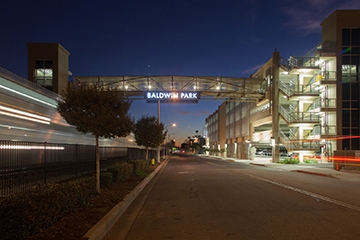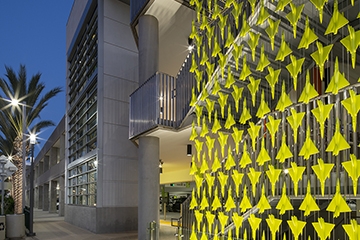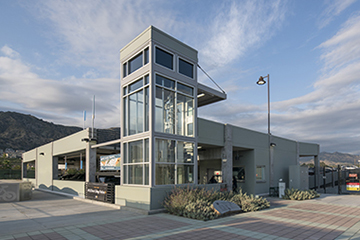While parking structures are an extremely common building type, there are a great deal of misconceptions about them. So is it parking fact or parking fiction? Below we tackle some common myths about parking.
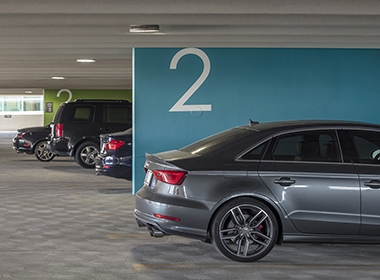 Bright paint and well-lit interiors can reduce hiding places and make parking structures safer.
Bright paint and well-lit interiors can reduce hiding places and make parking structures safer.
Myth #1: Parking structures are unsafe.
Truth: While we have all been in parking structures that fit the unpleasant Hollywood stereotype, modern parking best practices utilize Crime Prevention Through Environmental Design (CPTED). This design philosophy emphasizes safety through both active and passive security measures.
Passive security measures such as glass elevators, open stairwells, long sight lines, bright interiors and motion-controlled lighting are designed to reduce hiding places and increase visibility while making parking structures feel more open and inviting.
Active measures, such as security cameras and blue-light emergency phones, provide additional layers of security to improve safety.
Myth #2: Parking is a secondary component of most uses.
Truth: While parking is a supportive building type, its footprint is larger than you may think. In fact, depending on the project type, the square footage needed for parking can approach the same size of the use it supports. As such a prominent use of land, it’s crucial to evaluate how parking will integrate with a project early in the design process. This is especially true for site constrained developments that may struggle to accommodate a traditional parking layout within the available space.
Myth #3: The roof of a parking structure can be a great gathering place for people.
Truth: Parking and people have surprisingly different structural needs. A group of people can be much denser than cars; therefore structural loads in facilities designed to accommodate people are twice what is needed for facilities designed to support cars. That means parking structures are not appropriate gathering places for people – if they were not designed with this in mind.
If you are envisioning a new parking structure that can also provide a space for gathering and events, building codes require a stronger structure to support the increased loads. This should be integrated as early in the design process as possible.
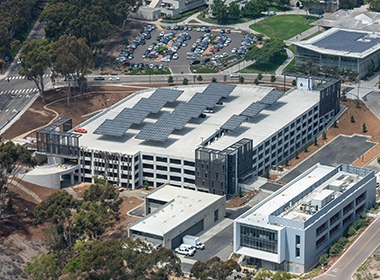 Photovoltaic panels are just one way parking structures can be sustainable.
Photovoltaic panels are just one way parking structures can be sustainable.
Myth #4: Parking is not sustainable.
Truth: Parking structures integrate a number of sustainable best practices that reduce their carbon footprint, from photovoltaic panels, energy efficient lighting and geothermal loops.
While LEED certification is not available to standalone parking structures, the Parksmart program offered through a partnership with the US Green Building Council, is a certification system designed specifically for parking structures.
Not only can parking structures be sustainable, a parking structure currently in construction for Denver Health will be the first garage to be Net Positive. Because the PV array and battery room needed to be sized to provide enough power in the winter, for the remaining 300 days of the year the PV array will generate enough power to not only run the parking structure, but also create a surplus that will be fed back into the grid.
Myth #5: There is a single, credible answer to the question, “what is the average cost of a parking stall?”
Truth: Determining the cost of parking is a lot like evaluating the cost of buying a car. In order to get an answer that’s meaningful, you have to narrow things down. Do you want new or used? Do you want a sedan or an SUV? How many bells and whistles? How much are you willing to spend? The same is true with a parking garage. How many stalls do you need? Where is it being built? Will it include below grade levels, or be entirely above grade? How many amenities do you wish to include? What level or architectural detailing will it feature?
Without exploring these questions, asking for a single answer to how much a parking stall costs is about the same as asking a car salesman what the average cost of a car is. You may get an answer, but it won’t be very informative. Learn more about what affects the cost of parking, and the impact of adding amenities.
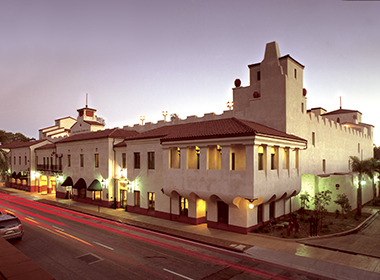 The Granada Garage in Santa Barbara was designed to fit into the context of its surroundings, and contains a treasure trove of architectural detailing.
The Granada Garage in Santa Barbara was designed to fit into the context of its surroundings, and contains a treasure trove of architectural detailing.
Myth #6: Parking structures are ugly, necessary evils
Truth: Parking structures provide a number of opportunities to enhance the user experience. Public art, public spaces, mixed-use, architectural detailing and pedestrian connections are all ways that parking can not only reinforce the identity of a place, but create a positive first and last impression.
For instance, the Granada Garage incorporates an extraordinarily detailed architectural façade along with office space to blend in with downtown Santa Barbara. The Gold Line Foothill Extension Metro parking garage in Arcadia features a public plaza. Large scale art installations at the San Diego Airport Terminal 2 Parking Plaza celebrate the history of aviation.
By making parking part of the overall journey, we create better destinations.
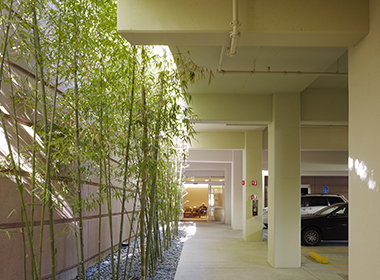 Lightwells can make parking structures feel more welcoming and open, and can also serve as a wayfinding device.
Lightwells can make parking structures feel more welcoming and open, and can also serve as a wayfinding device.
Myth #7: Parking structures are dark, confusing labyrinths.
Truth: Lighting and wayfinding are integral to parking structure design. LED lighting, brightly painted interiors and lightwells all help make parking structures feel warm and inviting. Moment frame design can also contribute to a feeling of openness by removing shear walls.
While excellent signage is one way that parking structures can help users navigate both by car and on foot, there are a number of other ways parking structures can create a better wayfinding experience.
One is dynamic signage. Parking guidance systems can be as simple as notifying drivers how many overall spaces are available, or as robust as pointing drivers directly to an open space and providing real time availability via mobile app.
A second method is more targeted to pedestrians. Landmark features such as public art and glass-backed elevators can serve as wayfinding devices to orient pedestrians. Different colored paint, iconic images or even music can help people remember where they parked upon return.
Did any of these myth busters surprise you? Despite the many preconceptions, parking is a vital component of many projects that can significantly impact the user experience in a positive way. Would you like to know more? Let us hear from you!



